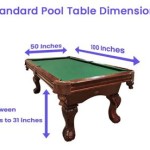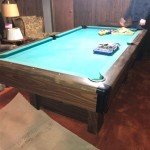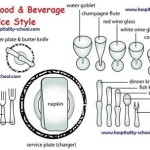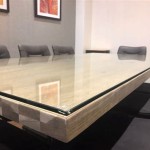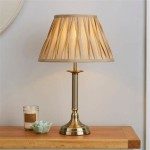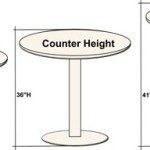Tables For Living Room: A Comprehensive Guide to Functionality and Style
The living room serves as the heart of a home, a space dedicated to relaxation, entertainment, and social interaction. Furniture within this space contributes significantly to its aesthetic appeal and functional utility. Tables, in particular, play a pivotal role, providing surfaces for various activities and serving as design anchors within the room. Selecting the right tables for a living room requires careful consideration of factors such as size, shape, material, style, and purpose. This article provides a comprehensive overview of different types of living room tables, exploring their features and offering guidance on how to choose the most suitable options for individual needs and preferences.
Understanding Different Types of Living Room Tables
The market offers a diverse range of tables specifically designed for living rooms, each serving distinct purposes and contributing to the overall ambiance. The most common types include coffee tables, end tables, console tables, and accent tables. Each category boasts sub-variations regarding design, material, and size, catering to various aesthetic tastes and functional requirements.
Coffee Tables: These tables typically occupy the central space in a living room, positioned in front of the sofa. They serve as a convenient surface for placing beverages, books, remote controls, and decorative items. Coffee tables come in various shapes, including rectangular, square, round, and oval. The choice of shape often depends on the size and layout of the living room, as well as the style of the sofa. Rectangular coffee tables are well-suited for longer sofas, while round or oval tables can soften the lines of a more angular space. Materials used range from wood and metal to glass and stone, each contributing a unique texture and visual appeal. Some coffee tables feature built-in storage compartments, such as drawers or shelves, offering additional space for organization.
End Tables: Positioned beside sofas or armchairs, end tables provide a surface for lamps, drinks, and reading materials. They contribute to the overall functionality and convenience of the seating area. End tables are typically smaller than coffee tables and often feature a more vertical design. They can be round, square, or rectangular, and their height is usually comparable to the arm height of the adjacent seating. Materials used can be similar to those found in coffee tables, allowing for a cohesive design scheme. End tables might also incorporate features such as USB charging ports or adjustable heights, enhancing their practicality.
Console Tables: Often placed against a wall or behind a sofa, console tables provide a narrow surface for displaying decorative items, holding lamps, or serving as a temporary landing spot for keys and mail. These tables are typically longer and narrower than coffee tables or end tables. They can be used to define different zones within a larger living room or to add visual interest to an otherwise plain wall. Console tables are available in a wide variety of styles, ranging from minimalist and modern to ornate and traditional. Materials used can include wood, metal, glass, and stone, often combined to create visually appealing contrasts.
Accent Tables: This category encompasses a broad range of tables that serve primarily decorative purposes. Accent tables can be used to display sculptures, plants, or other decorative objects. They often feature unique designs, materials, or finishes that draw attention and add personality to the room. Accent tables can be placed in various locations within the living room, filling empty corners or adding visual interest to otherwise unadorned areas. Their size and shape can vary widely, depending on the specific design and intended purpose.
Key Considerations When Selecting Living Room Tables
Choosing the right tables for a living room involves evaluating several factors to ensure they complement the space's aesthetic and meet functional needs. Size, shape, material, style, and budget are crucial considerations that influence the overall outcome.
Size and Proportion: The size of the tables should be proportional to the size of the living room and the other furniture within it. A large coffee table in a small living room can overwhelm the space, while a small coffee table in a large living room can appear insignificant. Similarly, the height of the coffee table should be approximately the same as the seat height of the sofa, allowing for easy access to items placed on the table. End tables should be positioned at a height that is comfortable for reaching drinks or lamps from the adjacent seating. Prior to purchasing tables, measuring the available space and taking note of the dimensions of existing furniture is essential. This proactive approach helps to avoid selecting tables that are disproportionate or impede movement within the room.
Shape and Layout: The shape of the tables should complement the overall layout of the living room. In a rectangular living room, a rectangular coffee table can reinforce the linear design. A round or oval coffee table can soften the lines of a more angular space and create a sense of flow. In smaller living rooms, round or oval tables can also be more space-efficient, as they allow for easier movement around the furniture. The layout of the furniture should also be considered when choosing the shape of the tables. Tables should be positioned in a way that does not obstruct pathways or create a cluttered feel.
Material and Durability: The material of the tables should be durable and appropriate for the intended use. Wood tables are a classic choice that offers warmth and versatility. Metal tables provide a modern and industrial aesthetic. Glass tables can create a sense of openness and lightness. Stone tables offer a natural and organic feel. When selecting materials, consider the level of maintenance required and the potential for wear and tear. For example, glass tables can be prone to scratches, while wood tables may require periodic polishing. The durability of the materials should also be considered, especially in homes with children or pets. Tables made from sturdy materials such as solid wood or metal are more likely to withstand heavy use and resist damage.
Style and Aesthetics: The style of the tables should complement the overall aesthetic of the living room. Different styles include modern, traditional, rustic, and eclectic. Modern tables often feature clean lines, minimalist designs, and neutral colors. Traditional tables may incorporate ornate details, rich finishes, and classic shapes. Rustic tables often utilize natural materials, such as reclaimed wood or stone, and feature a more rugged and informal aesthetic. Eclectic tables can incorporate a mix of styles and materials, creating a unique and personalized look. The style of the tables should also coordinate with the other furniture and décor in the living room, creating a cohesive and harmonious design scheme. Consider the color palette, textures, and patterns of the existing furniture when choosing the style of the tables.
Budget and Value: The budget for living room tables should be considered in relation to their value and longevity. Tables are available at a wide range of price points, from inexpensive mass-produced items to high-end designer pieces. It is important to strike a balance between affordability and quality. Investing in well-made tables from durable materials can be a worthwhile investment in the long run, as they are less likely to require frequent replacement. Compare prices from different retailers and consider the features and benefits of each table before making a purchase. Look for sales, discounts, and promotions to maximize value. Also, consider purchasing used or vintage tables, which can offer unique style and character at a lower price point.
Optimizing Table Placement for Functionality and Flow
Beyond selection, strategic placement of living room tables is critical for optimizing functionality and enhancing the overall flow of the space. Correct placement ensures tables serve their intended purpose without impeding movement or creating a cluttered appearance.
Coffee Table Placement: A coffee table should be positioned in front of the sofa, leaving sufficient space for comfortable legroom. A general guideline is to maintain a distance of approximately 14 to 18 inches between the sofa and the coffee table. This allows for easy access to the table while also providing ample space for walking around the furniture. The coffee table should also be centered in front of the sofa, creating a sense of balance and symmetry. If the living room features multiple seating areas, consider using multiple coffee tables or smaller side tables to serve each area.
End Table Placement: End tables should be placed beside sofas or armchairs, within easy reach of those seated. The height of the end table should be approximately the same as the arm height of the adjacent seating, allowing for comfortable placement of drinks or lamps. If the seating is lower to the ground, choose end tables that are correspondingly lower. End tables should be positioned in a way that does not obstruct pathways or create a cluttered feel. Ensure there is sufficient space between the end table and other furniture to allow for easy movement. If the end table is being used to hold a lamp, ensure that the lamp is positioned at a height that provides adequate lighting for reading or other activities.
Console Table Placement: Console tables are typically placed against a wall or behind a sofa. When placing a console table against a wall, ensure that it is securely anchored to prevent it from tipping over. If the console table is being used to display decorative items, arrange them in a balanced and visually appealing manner. Avoid cluttering the table with too many items, as this can create a disorganized look. When placing a console table behind a sofa, ensure that it is approximately the same height as the back of the sofa. This will create a seamless and integrated look. The console table can be used to hold lamps, plants, or other decorative items, adding visual interest to the back of the sofa.
Accent Table Placement: Accent tables can be placed in various locations within the living room, filling empty corners or adding visual interest to otherwise unadorned areas. When choosing a placement for an accent table, consider its size, shape, and style. A taller accent table can be used to add height to a room, while a smaller accent table can be used to fill a small space. The accent table should be positioned in a way that complements the overall design of the room and does not obstruct pathways. Consider using an accent table to display a sculpture, plant, or other decorative object, adding personality and visual appeal to the living room. Remember to consider the lighting in the area when placing accent tables. Accent lighting can highlight the table and its display items, creating a more dramatic effect.

Most Beautiful Wood Interior Center Tables Design Stylish Space Savings Coffee Fo Muebles De Apartamento Mesas Sala Modernas Centro

Bestier Round Coffee Table With Storage Living Room Tables Sy Metal Legs Retro Grey Oak Com

Coffee Tables Living Room Furniture Target

How Many Side Tables Should You Have In Your Living Room Sofas Etc

Cocktail Coffee Tables Point Furniture Nashville

Urtr 17 7 In Classic Brown Square Wood Side Table Living Room 2 Tier End With Shelves Bedroom Nightstand Coffee Hy02305y The Home Depot

Wooden Brown And White Center Table For Living Room Home With Storage At Rs 11000 In Jaunpur

End Side Tables Target

End Tables Side Accent Pottery Barn

Coffee And Side Tables 60 Ideas For Your Living Room

